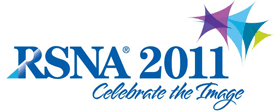
Abstract Archives of the RSNA, 2011
S S Jayadeepa MBBS,MD, Abstract Co-Author: Nothing to Disclose
Anjali Agrawal MD, Presenter: Employee, Teleradiology Solutions
Arjun Kalyanpur MD, Abstract Co-Author: CEO, Teleradiology Solutions, Bangalore, India
The practice of emergency radiology requires rapid yet accurate interpretation of imaging examinations with the potential for significant adverse outcome in the case of a missed finding. In our international teleradiology practice, we tested the utility of simultaneous dual review to evaluate its role in minimizing radiologic error. Simultaneous dual review of examinations was conducted in a parallel reading environment.
We conducted a retrospective study of emergency CT examinations in which contemporaneous dual review had been performed. Cases were scored for discrepancies using the ACR Peer review scoring system (ACR QA grades 2b, 3b, 4b) for clinically significant modifications to the initial report. The data was further analyzed for differences between modalities, body parts, and study types (trauma vs non-trauma).
Five hundred and seventeen cases who had undergone radiological procedures at a single Radiology Center over a period of 1 month were selected for the study. Fifty-nine of the 517 subjects (11.4%) demonstrated clinically
significant findings that were either undetected or incompletely evaluated during the initial review and were picked up during the dual review process, allowing for report modification. Head CTs and plain radiographs comprised the majority of the studies (39.4 % of the 517 cases) and accounted for the least clinically significant error rate of less than 1%. The MRI head studies in comparison, although comprising only 3% of the total cases peer reviewed, had the largest error rate of 30%. The turnaround time between the preliminary report and peer review was reasonable in the range of 11-40 mins for majority of cases.
Contemporaneous dual review is an effective method to increase reporting accuracy in the emergency setting.
Emergency radiology can benefit from contemporaneous dual review to evaluate large and complex imaging datasets in a short period of time.
Jayadeepa, S,
Agrawal, A,
Kalyanpur, A,
Utility of Contemporaneous Dual Review in the Setting of Emergency Teleradiology Reporting . Radiological Society of North America 2011 Scientific Assembly and Annual Meeting, November 26 - December 2, 2011 ,Chicago IL.
http://archive.rsna.org/2011/11014927.html

